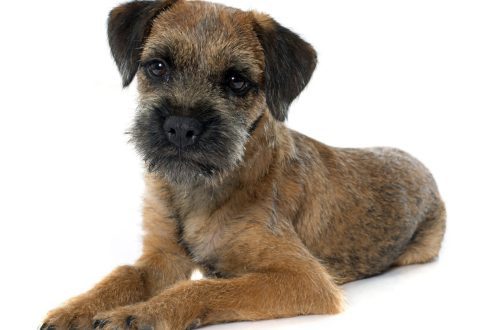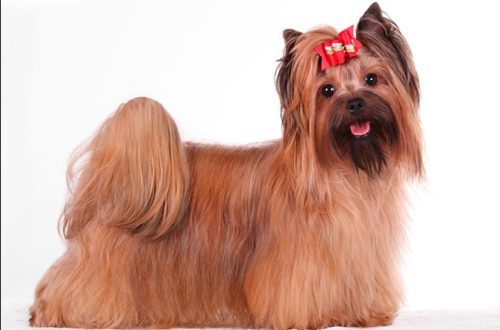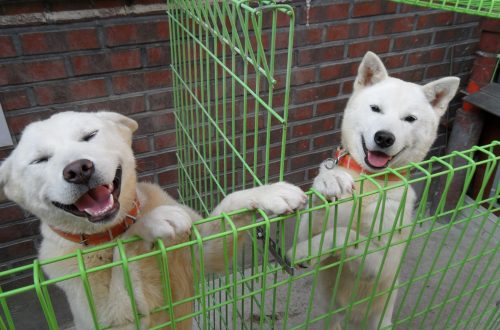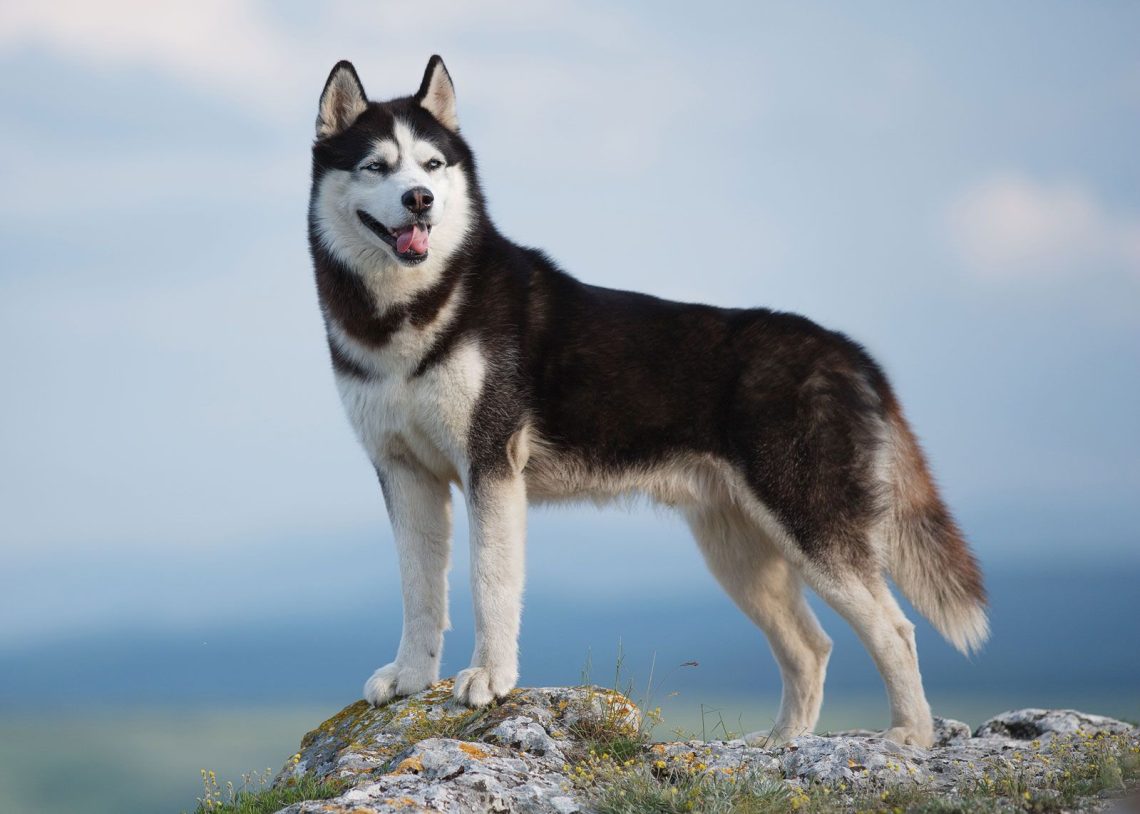
Siberian Husky
Other names: Husky
The Siberian Husky is one of the oldest dog breeds that has faithfully served man for many centuries.
Contents
- Characteristics of Siberian Husky
- Basic moments
- History of the Siberian Husky breed
- Video: Siberian Husky
- Siberian Husky breed standard
- The nature of the Siberian Husky
- Education and training
- How to start training a puppy of Siberian Husky
- Care and maintenance
- What and how to feed huskies
- Health and disease of the Siberian Husky
- How to choose a puppy
- Photos of Siberian Husky puppies
- How much does a siberian husky cost
Characteristics of Siberian Husky
| Country of origin | Russia |
| The size | large |
| Growth | 54-60 cm at the withers |
| Weight | 20–27 kg |
| Age | up to 12 years |
| FCI breed group | spitz and breeds of primitive type |
Basic moments
- The Husky has a cheerful, good-natured and friendly perception of people of all ages, a calm attitude towards strangers.
- These northern dogs are very clear and open in communication.
- Sincere interest in learning new things, love for long walks and even multi-day trips.
- Genetically determined good health.
- Excellent learning and training abilities.
- Husky wool does not have a characteristic smell, the dog will not cause problems associated with allergic reactions.
- “Sibiryak” is very laconic. He almost never barks, but howling like a wolf is welcome.
- He gets along well with other dogs, but does not like shorts.
- In relation to its size, it shows moderation in eating.
- Among the shortcomings, one can note the husky’s tendency to escape, excessive, sometimes even destructive activity (especially at a young age), a very strong stubborn character, a desire for leadership – and hence possible problems in training.
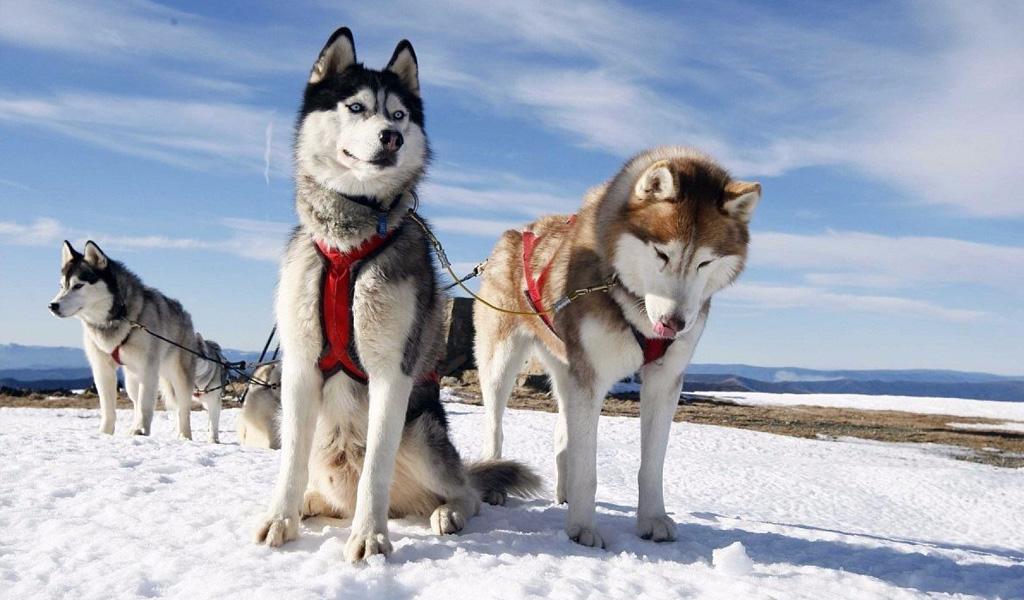
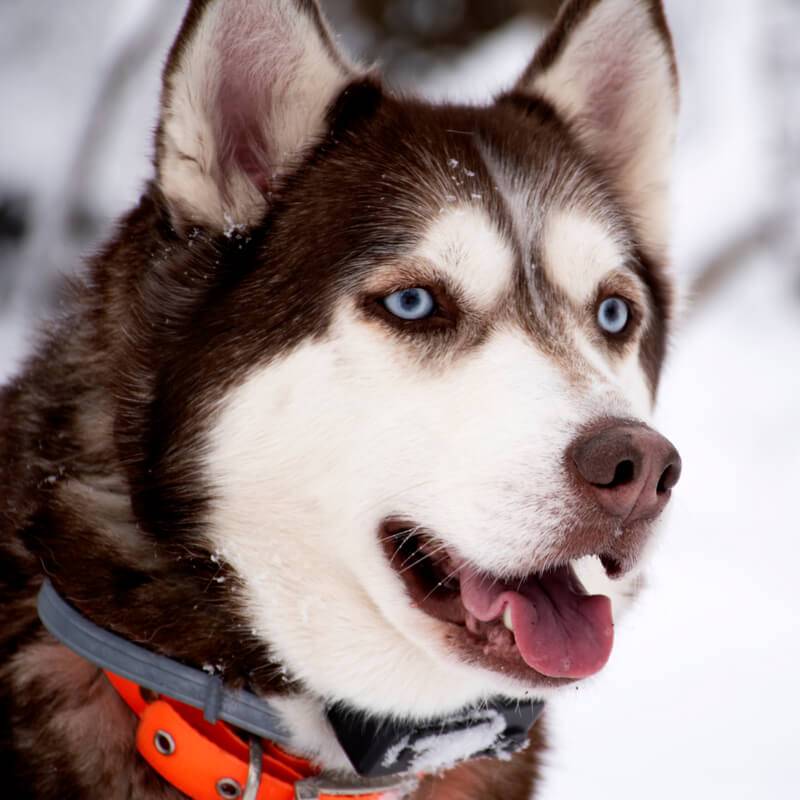
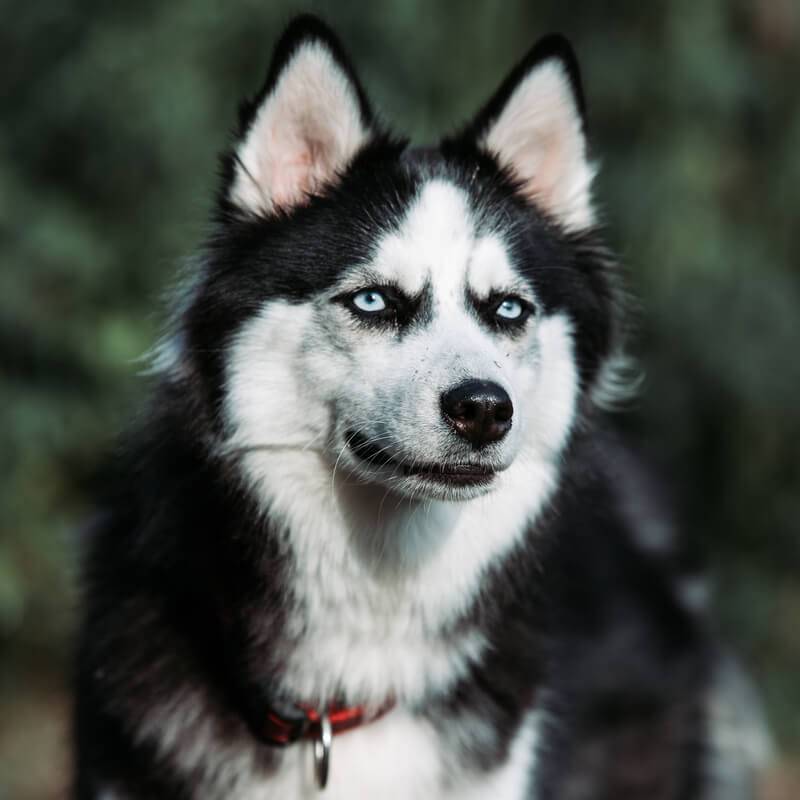
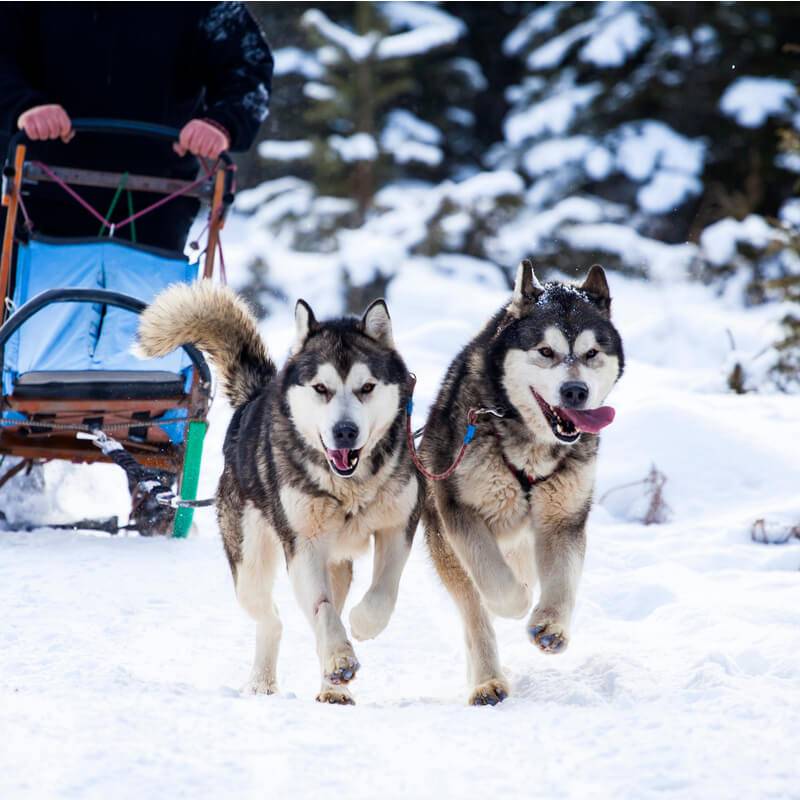
The Siberian Husky is an amazing sled dog bred in the Far North. It is unlikely that you will find any other breed whose representatives would share so many hardships and difficulties with a person, and the story of saving the city of Nome from a diphtheria epidemic will forever remain in grateful human memory. Huskies are the living embodiment of a dog’s mind, quick wits, devotion and love for a person.
History of the Siberian Husky breed
The Siberian Husky is a dog that has been living next to humans for many centuries. It was bred by the indigenous inhabitants of the Russian Far North. The Chukchi were in dire need of a dog that could travel long distances and transport people and goods from seasonal hunting grounds to camps. Severe climatic conditions had a decisive influence both on the formation of the structure of the animal and on its character.
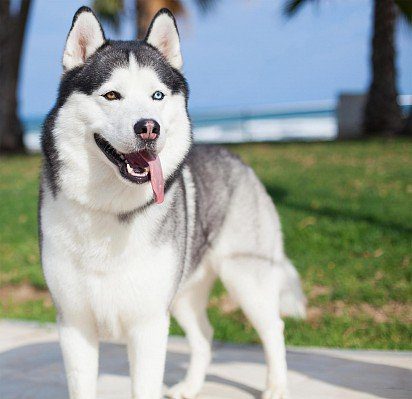
The spread of the breed beyond its centuries-old habitat actively began in the 20th century. The endurance of the Husky, the ability to work harmoniously in a team for a long time and good speed were appreciated on the American continent. Alaskan mushers increasingly began to acquire these dogs for participation in dog sled races. The team of Leonard Seppala, led by the legendary Togo, won the greatest fame, which did not give the palm for several years in a row. But this musher with his dogs entered the history of mankind primarily because it was his Togo, leading a team, who overcame a huge section of the famous dog relay race of 1925, delivering anti-diphtheria serum to Nome. A small town in Alaska, cut off from the world by many miles of snowy desert, caught up in an epidemic of a deadly disease. It was not possible to get to it by the usual means quickly and safely: adverse weather and natural conditions were not suitable for air or land transportation. And then people turned to the faithful huskies for help.
The sled relay race covered more than a thousand kilometers in a record five days, and the population of the city was saved. The best dogs, led by Togo, covered 146 km – the maximum length of the distance. Eighty kilometers of dogs walked on the ice of Norton Bay in forty degrees of frost in a snowstorm. Such a feat became possible only thanks to the instinct, courage and endurance of the leader of the pack. Eighty kilometers of dogs walked on the ice of Norton Bay in forty degrees of frost in a snowstorm. Such a feat became possible only thanks to the instinct, courage and endurance of the leader of the pack. Eighty kilometers of dogs walked on the ice of Norton Bay in forty degrees of frost in a snowstorm. Such a feat became possible only thanks to the instinct, courage and endurance of the leader of the pack.
The last team in this relay were the dogs of Gunnar Kaasen, led by Balto, who got all the glory. In memory of these events, grateful people erected a monument to this dog in New York. Statues of Togo and Balto greet guests at the entrance to the ClevelandMetroparksZoo, and visiting the museum of the small Alaskan town of Wasilla, you can see the embalmed body of Togo. In memory of that incredible relay race in Alaska, an annual multi-day dog sled race is held.
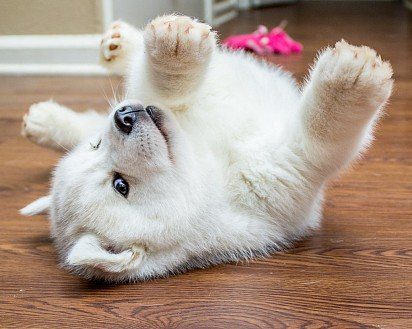
Further development of the breed took place on the American continent, since in the 30s in the USSR the selection of sled dogs was recognized as unpromising.
In the United States, for a long time, special attention was paid to the sports component. Crossbreeding of Siberian Huskies with native Alaskan sled dogs led to the emergence of mestizo breeds, which became much more successful than huskies in racing competitions, although they did not receive recognition from international organizations – mestizos turned out to be very diverse.
A new direction in the history of the breed – show – began from the moment when E. Seeley and L. Demidoff first presented to the judges a bright black and white dog with blue eyes. It was from the 70s of the last century that huskies increasingly appeared as a domestic companion dog, quite suitable even for keeping in an apartment.
The return of the breed to its historical homeland, to Russia, took place in the 90s. The first dogs were imported from Belgium and the Czech Republic in 1995, and five years later the number of purebred puppies reached one and a half hundred.
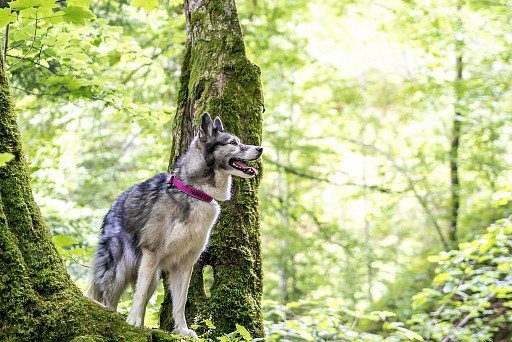
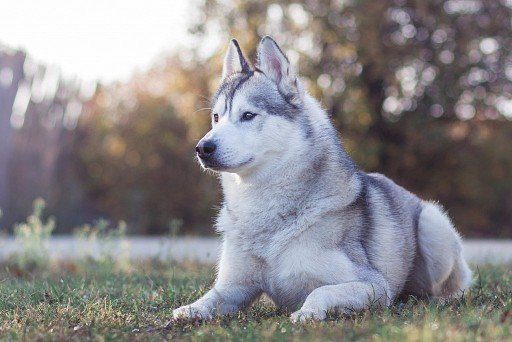
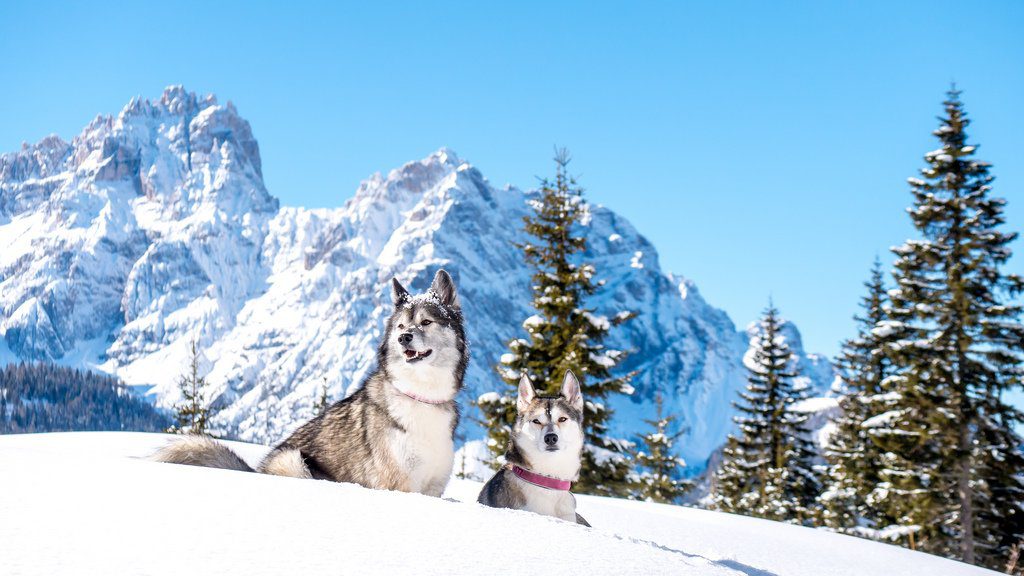
Video: Siberian Husky
Siberian Husky breed standard
Today, huskies are divided into three groups – driving, sports (racing) and exhibition.
The official breed standard gives a description of the sled dog. To a greater extent, British-bred huskies fall under these criteria.
Siberian Husky Dimensions

The Siberian Husky is a medium sized animal. The height of the male at the withers is from 54 to 60 cm, the bitch is from 51 to 56 cm. The weight of the dogs is 21-28 kg and 16-23 kg, respectively. Excess height is grounds for disqualification. The weight of the husky is proportional to the height, the body length when viewed from the side is slightly greater than the height at the withers (extension index 110-120).
Head
The skull is small, rounded at the occiput and tapering evenly towards the eyes. The back of the nose is even, the stop is pronounced. The muzzle is of medium length, with almost the same distance from the nose to the stop and from it to the occiput. It tapers evenly towards the nose, which should be neither pointed nor square.
The husky is characterized by a lively and interested, even with a certain amount of mischief, expression of the muzzle.
The disadvantages include:
- sharply defined, as well as a massive head;
- the presence of a fuzzy transition from the muzzle to the forehead;
- black nose for gray, red and black huskies, and brown for brown dogs;
- muzzle too narrow or too broad.
Eyes
Slightly obliquely set at a medium distance from each other, almond-shaped. The color of the iris is brown or blue, mosaic-colored or heterochromic options are allowed.
Disadvantages – close and too obliquely located eyes.
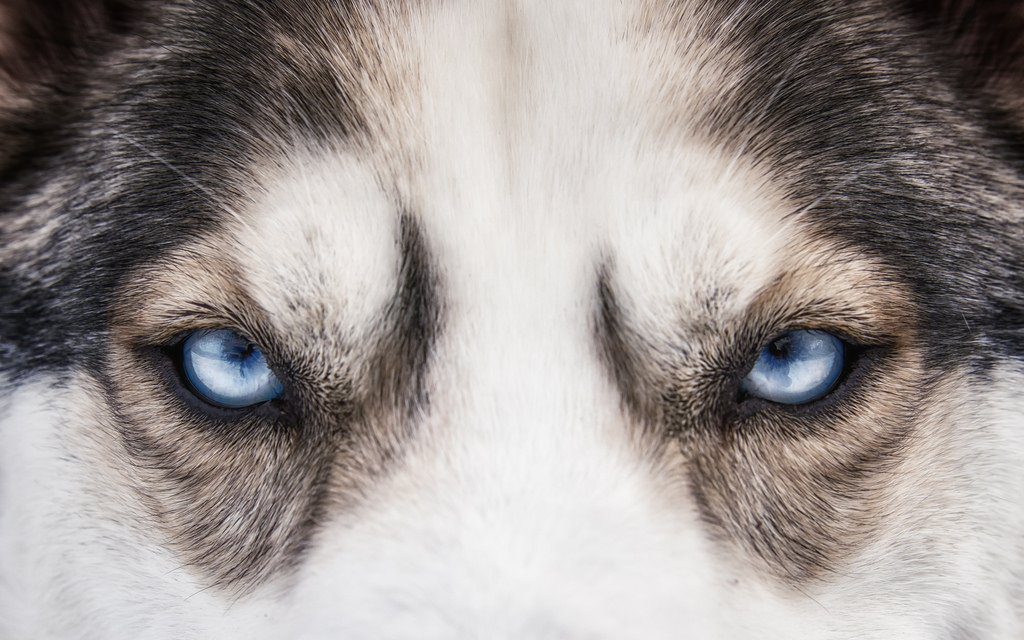
Siberian Husky Ears
The ears of the husky are located high on the head at a short distance from each other. Strongly stand, slightly rounded tips are directed strictly upwards. The ears are medium sized and triangular in shape.
Disadvantages – too large (in relation to the size of the head) ears, the tips are not directed upwards, but to the sides.
Teeth
Scissor bite required, any deviation is a fault.
Neck
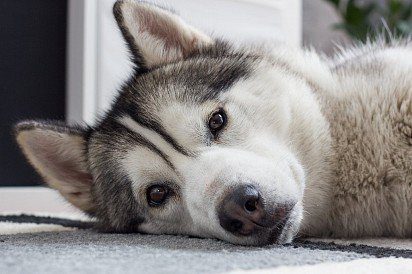
Medium length, raised from a standing animal. When moving, it leans so that the husky’s head is slightly forward.
Disadvantages – too thick, as well as an excessively long or short neck.
Frame
The chest is strong and deep (the heart of the Husky is quite large), the ribs are widely spaced. The back is strong, with a straight line from the shoulder blades to the croup. The lumbar region is elastic and tucked up.
Disadvantages – too wide chest with barrel-shaped ribs, sagging back, sloping topline from the shoulder blades to the croup.
Tail
When at rest, the Husky’s tail is slightly lowered and is slightly below the line of the back. When the dog is interested or excited, it curves up in a crescent shape, but twists into a ring, does not roll over its back or roll to the side. The coat is approximately the same length, which is why the husky’s tail looks so much like a round fox.
Disadvantages – too low or, conversely, too high set, tightly curled tail.
limbs
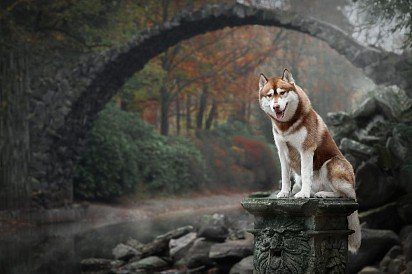
The forelegs are straight and parallel, set at a moderate distance from each other. The elbows are pressed to the body, turning neither in nor out. The bone is not heavy, but strong.
Rear – parallel, moderately spaced. The stifles are movable, hocks, well angulated and close to the ground.
Rudimentary toes on both front and hind legs must be removed.
Disadvantages – cow’s set of hind limbs, elbows turned outward, heavy large bone.
Siberian Husky Paws
The paws of the Husky are medium in size, oval, but not elongated. Well furred between the balls of the fingers. The pads are thick-skinned. The paws of the dog in a calm state do not turn out to the sides.
Disadvantages – clumsy or, conversely, too small paws, flat fingers.
Wool
The coat of the husky is of medium length, which, creating the effect of good pubescence, does not interfere with the lines of the body. The undercoat is soft and dense. The integumentary hairs are straight and smooth, but by no means coarse and erect.
Disadvantages – shaggy hard coat.
Color – from pure white to black. On the head there are white markings in the form of a mask, characteristic only for huskies.
Photo of adult husky
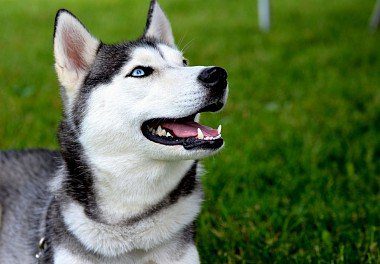
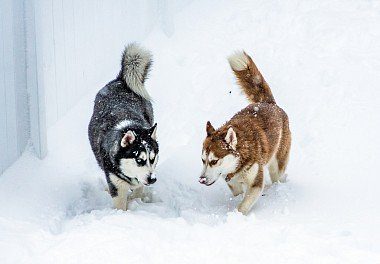
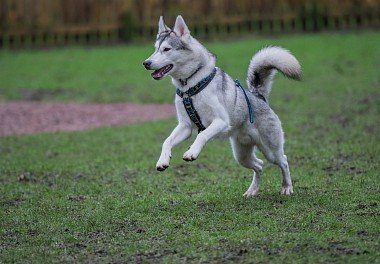
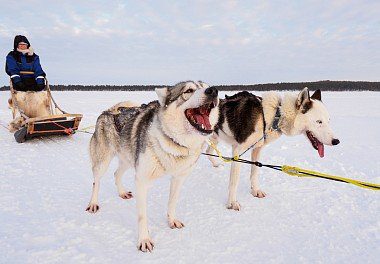
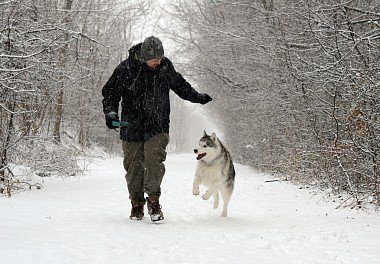
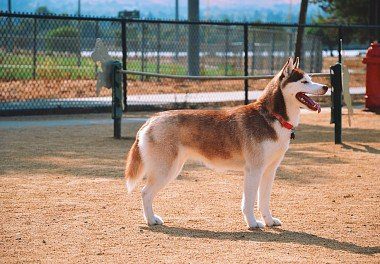
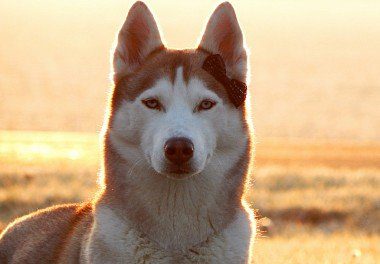
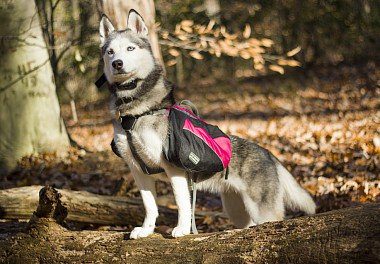
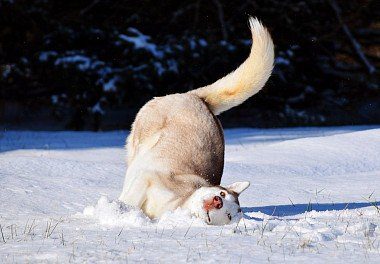
The nature of the Siberian Husky
Friendliness, liveliness of mind and calm disposition are the main properties of the Siberian Husky. But, speaking about these wonderful dogs, I would not like to be limited to such a short list.
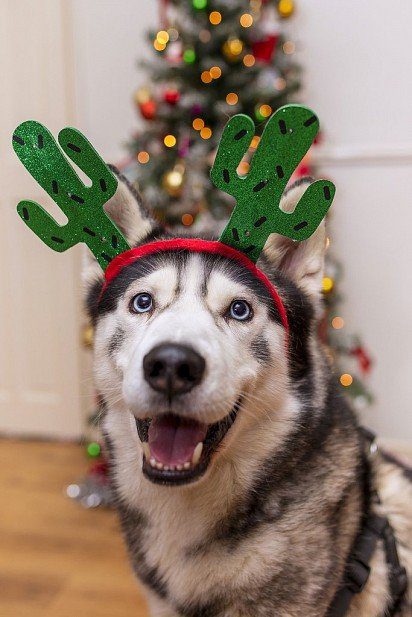
The ancestors of modern animals, who faithfully served man for many centuries in the harsh conditions of the Far North, passed on to their descendants all the variety of distinctive character traits and behavior that so attract connoisseurs of this breed today.
Huskies, like real sled dogs, are very active and need good regular exercise.
Representatives of this breed are not suitable for hunting lovers, despite the presence of a fairly strong instinct. For the Siberian Husky, such fishing is one of the ways of subsistence, and it will not share prey (the dogs were fed only in winter, the rest of the time the team was grazing).
These northern dogs are pack animals, which has led to an almost complete leveling of the instinct to protect their own territory, therefore, such pets are completely unsuitable for the role of a watchman. The lack of aggression towards a person, even towards a stranger, also does not allow these dogs to be classified as guard dogs. Attempts to embitter the dog can only lead to permanent mental disorders of the animal. Nature endowed these amazing dogs with a well-developed intellect and the ability to make independent and often extraordinary decisions. Hence the difficulties that arise during training, when, with certain commands, a template algorithm of actions is required from a husky. The use of representatives of the breed as service animals is not practiced.
The Siberian Husky is a companion dog. She is perfect for a large family, she will tenderly and reverently love all household members, although she recognizes only one as the leader and owner. The attitude of these animals towards children deserves special attention. It is difficult to find a more gentle, attentive and affectionate friend for a child. Suffice it to recall that the Eskimos even used huskies to warm newly born babies.
One of the unusual character traits for dogs is the tendency of animals to escape. A door latch or a hook will not become an obstacle – to understand the principle of their action for a pet is a matter of several days. Digging a hole under the fence, and if necessary, overcoming a high barrier is also not a problem. No one claims that your dog will systematically engage in such tricks, but you should not forget about this feature of the husky.
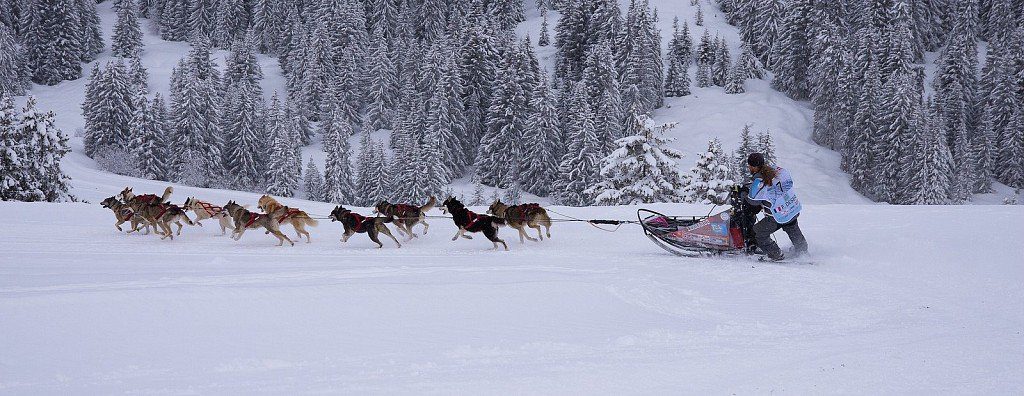
Education and training
In matters of education and training of the Siberian Husky, it is important to consider that these dogs are by nature working, but not service dogs. Experts consider representatives of the breed to be well and easily trained animals. But they will only obey a recognized leader and owner – you must become an indisputable authority for the pet.
Raising a puppy should be based on two main principles – rigor and fairness. The policy of carrot and stick is unacceptable. An excessively soft attitude will spoil the baby and he will “sit on your head”, cruelty will embitter the animal, which, on occasion, will definitely take revenge on you.
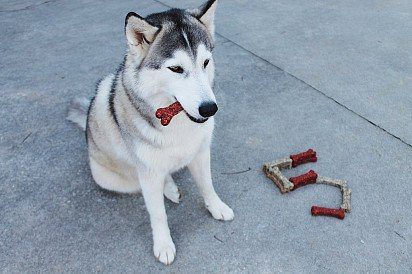
You can start training and training a dog from the age of three months. The Siberian Husky is very smart, and if you fail to interest him, then it will be difficult to achieve a result. And not because the animal does not understand you – no, he is simply not interested. The greatest effect is given by the process of training, dressed in a game form. These dogs are very sensitive to the very manner of giving commands, so the correct intonation is very important. You must speak calmly, confidently and clearly. Although at the same time, many owners of dogs of this breed note that huskies respond better to a request than to an order. In any case, each owner is looking for his own way to the heart and mind of his pet.
Raising any dog is impossible without a system of rewards and punishments. There are several Husky misdemeanors that should be stopped immediately:
- aggressive behavior towards the owner;
- unreasonable hostility to other dogs;
- actions that may harm the animal itself.
The best method of punishment for the Siberian Husky is to demonstrate its strength and superiority. To do this, simply take the animal by the withers, press it to the floor and hold it until the dog stops resisting and calms down. Beating as a method of education is unacceptable.
Rewards are easier. Always praise your dog for every correct action. If you are working with a puppy, praise can be backed up with a piece of treat. The intonation should be different from the tone in which you give commands, but do not show excessive emotions – Huskies cannot stand high shrill intonations.
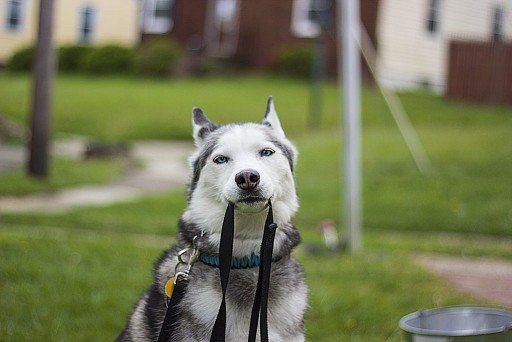
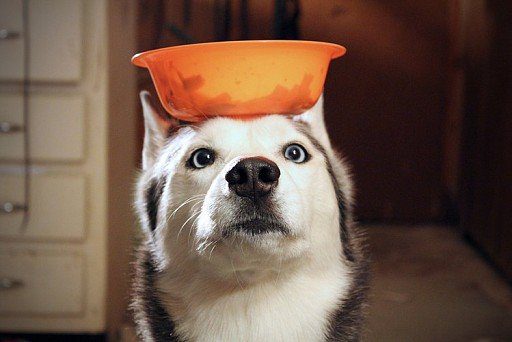
How to start training a puppy of Siberian Husky
1. Recognition of one’s own nickname. The methods are quite simple. Call his name when you call your pet to a bowl of food, after waking up the baby, gently stroke him, pronouncing the nickname. The results will not keep you waiting.
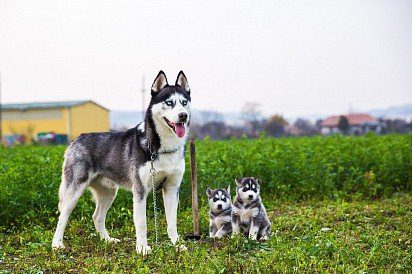
2. Husky, like a pack dog, needs a leader, so from the first hours of your stay in your house, let her know who is in charge here. And be careful – even when communicating with members of your family, you must behave like an indisputable authority, and the puppy must see this. Husky is very smart and will immediately feel if you give “weakness” in relations with other members of the pack, and the dog perceives all household members in this way.
3. Execution of the simplest commands: “Next!” and “To me!” achieved by the traditional method – with the help of tasty treats and praise.
Many owners are concerned about the question of what to do in cases where the puppy reacts violently to the arrival of strangers in the house: it behaves intrusively, gets in the way, begs for food. The only answer is to ignore it. Do not stroke, do not admire (the husky is just waiting for this), but simply do not notice. The method works flawlessly. The dog, realizing that no one is interested in him, will very soon leave for his place.
Among the general recommendations for the upbringing and training of the Siberian Husky, the following can be distinguished:
- do not forbid your pet to communicate with other dogs;
- do not take the dog in your arms, especially holding it with its stomach forward;
- do not tire the huskies by performing the same command many times in a row;
- respect your friend and treat him fairly.
Care and maintenance
When purchasing a husky puppy, you must remember that these Siberians simply cannot stay within a limited space for a long time. Any attempt to make your pet a “sofa” dog is doomed to failure in advance. Movement, active games, good physical activity, long walks – these are the elements of these magnificent animals.
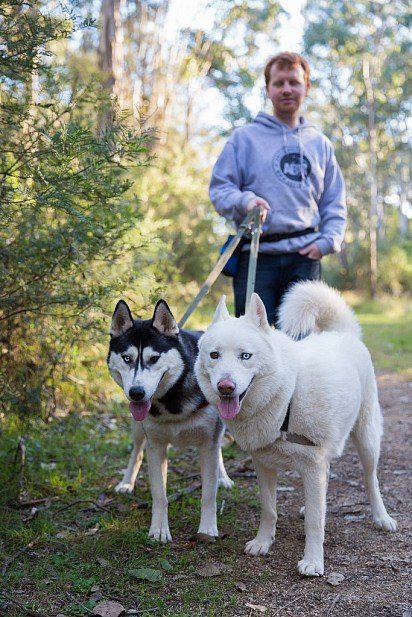
In order for the energy of a dog, especially living in an apartment, to be directed in the right direction, breed experts recommend loading the Siberian Husky in full. Otherwise, the well-being of your home may be seriously affected. As one of the ways out, the option of keeping the dog in a cage can be considered. Accustomed to this state of affairs from an early age, the Husky will react quite calmly to this. Another thing is that for a loving owner, the sight of a friend sitting behind bars will not at all cause positive emotions, so the best way out is to “load” the pet in such a volume that he simply does not have the strength to do home pranks.
The content in a country house also has its own characteristics. Remember that huskies are dogs from harsh lands, and being outside is not a burden for them. Many owners note that even in severe frosts, animals rest and sleep on the snow, and not in a booth – the spirit of the Arctic reminds of itself.
Be sure to equip your pet with a spacious aviary. Just do not use a chain-link for this: in a matter of days, the Siberian Husky will turn it into hanging tatters. For fencing, take a wire with a thickness of at least half a millimeter. It is better to lay out the floor with natural stone, because these dogs are great digging specialists and will not fail to demonstrate their talent in this matter. If you think that the aviary is superfluous, make sure that the fence of your site is a reliable barrier to the husky in his quest for research and long-distance travel.
The best thing is to find time to take much-needed walks for your dog.
What should I buy before bringing a pet into the house? First of all, this is a couple of bowls for water and food, special “chewing” toys, a rug on which your friend will rest. A little later, you will need to buy such items of equipment as a collar, leash and muzzle. A halter can also come in handy – with its help even a child will be able to control the Siberian Husky.
What and how to feed huskies
Until the age of two months, the puppy is fed 6 times a day, up to 4 months – five, up to six months – four, then – three times a day. From ten months, it will be enough for a Siberian Husky to eat twice, and an adult animal (over one and a half years old), depending on physical activity, eats once or twice a day.
Most experts agree that it is better to feed a four-legged friend with dry food and special canned food. It must be products of premium and super-premium classes. Cheap feeds have a high content of starch, which is not very useful for these northern dogs.
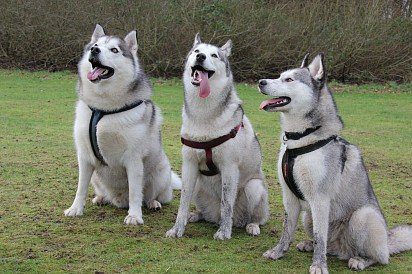
Until the animals reach 10 months of age, a “puppy” type of food will be sufficient for normal development; for adult huskies, balanced feeds for breeds with high motor activity should be used.
Breeders recommend that even when using the highest quality feed mixtures, carefully monitor the condition of the dog in order to make timely adjustments to the menu if necessary.
Organizing a full-fledged husky diet with natural products is somewhat more difficult. Up to 60% of the diet should be meat (raw or slightly “scalded”). The best choices – beef, rabbit and turkey – are possible, it is better not to mess with chicken because of the high risk of allergic reactions, pork and lamb should be completely excluded. Eggs, or rather egg yolk in boiled and raw form, can be added to porridge a couple of times a week, vegetables are also useful, with the exception of potatoes. Dairy products are best given only in their sour versions. Do not forget to add a little vegetable oil and fish oil to the feed.
No matter how varied you feed the Siberian Husky, you cannot do without vitamin preparations. Your veterinarian will tell you about their correct use.
Pet hygiene comes down mainly to hair care, especially during molting, as well as to control the condition of the teeth. In order for them to be white and smooth, clean the stone and plaque in a timely manner. This can be done both at home and in the clinic.
But Huskies do not need to bathe. Their coat is capable of self-cleaning, and the “dog spirit” does not pull from this dog. It is precisely water procedures that provoke the appearance of an unpleasant odor, which can lead to a violation of the fat balance of the skin and coat.
Proper care and maintenance is the key to good health and longevity of your friend.
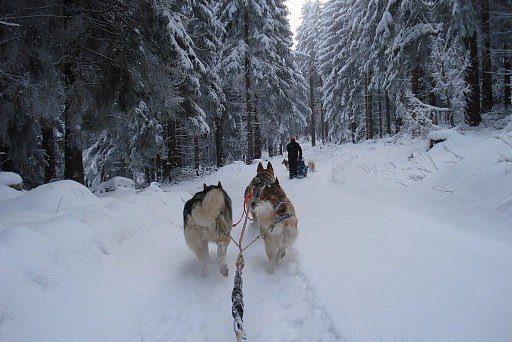
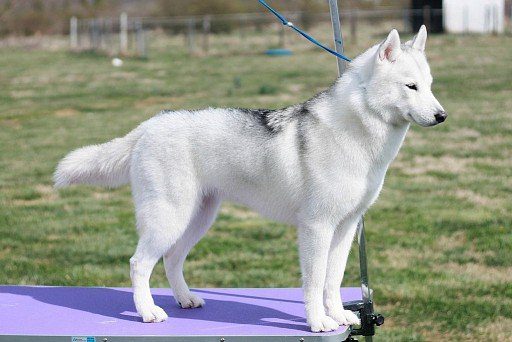
Health and disease of the Siberian Husky
As a true child of the high northern latitudes, the Siberian Husky is distinguished by good health. However, this does not mean that the owner should not monitor the condition of his pet. When purchasing a puppy, study the pedigree of his parents and check if there were any diseases transmitted at the genetic level in his family. For dogs of this breed, most often it can be diabetes or thyroid problems, some eye diseases (glaucoma, corneal dystrophy, cataracts), hip dysplasia. Sometimes Siberian Huskies suffer from epilepsy. It will not be possible to completely cure this disease, but competent care will reduce the number of attacks.
Timely and complete vaccination, careful monitoring of the condition of the dog will avoid most health problems.

It is recommended to periodically examine the ears, eyes and teeth of the animal, monitor the condition of its coat. Do not ignore the gait of your husky. Lameness can be the result of both muscle damage and incipient problems with the musculoskeletal system.
Control your dog’s weight. Both obesity and malnutrition are equally harmful.
Timely deworming is very important for the Siberian Husky, especially given the tendency of dogs of this breed to eat feces (any attempts should be severely suppressed).
Keeping in mind the northern origin, during summer walks, try to choose the coolest and most shady places.
In case of any symptoms of discomfort, contact your veterinarian immediately.
With good care and proper maintenance, the life expectancy of a Husky can be more than 15 years.
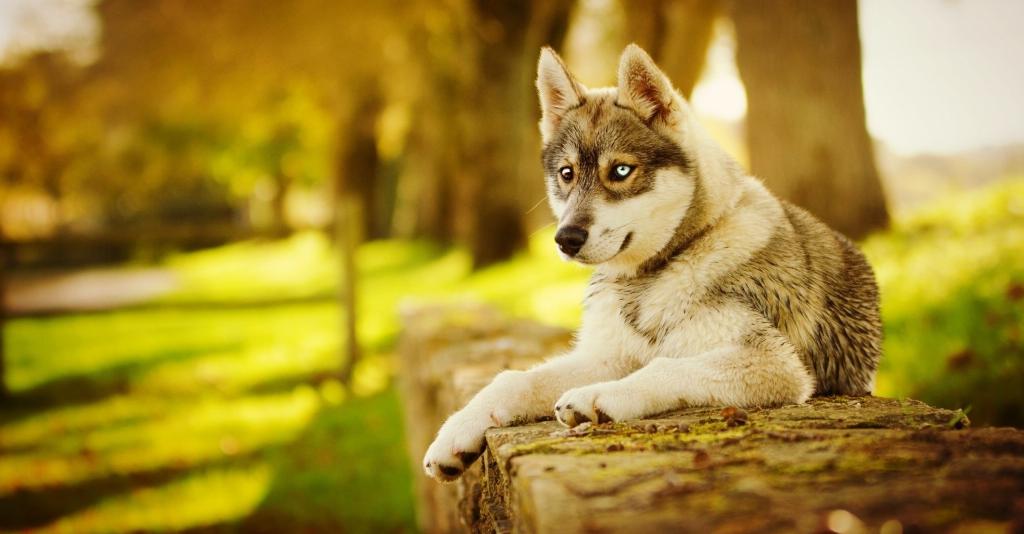
How to choose a puppy
The main rule is that you can buy a baby only in specialized nurseries or from well-known breeders. This will give you much more guarantees that the grown animal will fully meet the breed standards and be in good health. Buying a husky puppy over the Internet or in the market is completely out of the question. Even if they really offer you a thoroughbred baby, how can you check the conditions under which the dog was kept, what the puppy, as well as his parents, were fed? No one can guarantee you the correct and timely vaccination. And these are all components of the future health of your pet.
Buying a husky puppy from a breeder or kennel has other benefits as well. Firstly, you get the opportunity to communicate directly with all the puppies of the litter, assess their character, temperament and intelligence. Secondly, to learn for yourself a lot of important information about the behavior of animals, their diet, habits. An experienced and responsible breeder will definitely answer all your questions, ask why you chose the Siberian Husky, and give practical advice on care and maintenance. Thirdly, a puppy from a kennel or from a recognized breeder must have all the necessary accompanying documents, from a pedigree to a veterinary book with data on vaccinations and deworming.
You can take a Siberian Husky puppy to your home at about two months of age. Try to meet with the baby as often as possible, walk and play with him. Many breeders recommend taking an older animal – the dog already has some skills and is more disciplined, and the new owner will have a little less educational tasks at first.
It will also be useful to know that every husky grown in a kennel has its own brand. It is usually placed on the inside of the ear or on the dog’s belly.
Photos of Siberian Husky puppies
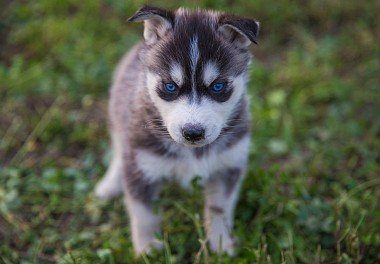
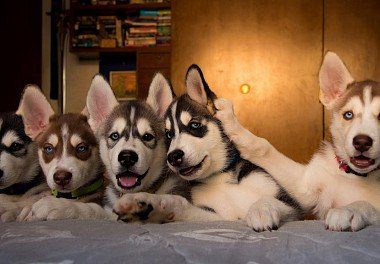
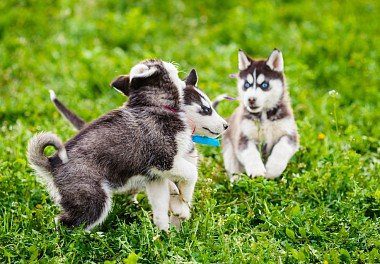
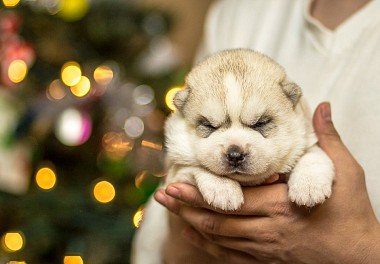
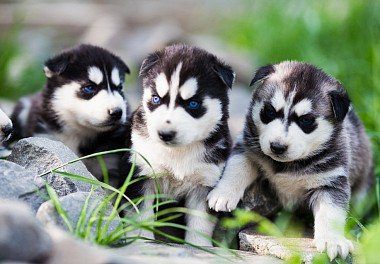
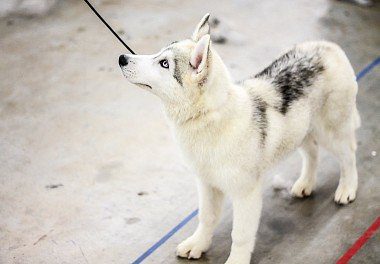
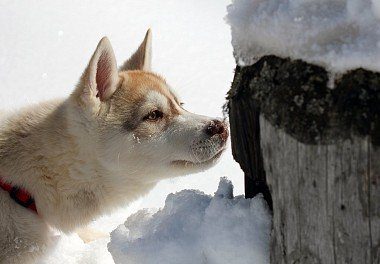

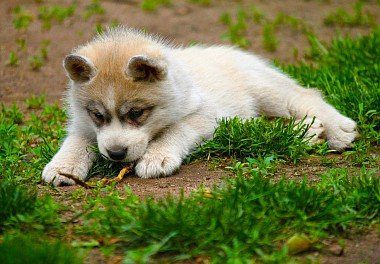
How much does a siberian husky cost
There are several factors that affect the cost of husky puppies. This is the presence of a pedigree, and the individual qualities of the baby (appearance, physical form, gender), and the status of the parents. It is clear that the cubs of champion dogs – in the case of huskies, not only exhibitions, but also sports competitions – will cost much more than babies of ordinary parents.
If you just want to have a friend at home and don’t bother with a show career, your choice is a pet class puppy. It will cost 400-450 $. Most likely, it will be sold without a pedigree, but will that stop you?
Breed-class dogs cost from 500$. They have all the necessary documents and are quite suitable for breeding work. Some minor deviations from the breed standard are possible.
The most expensive are show class puppies. Such animals fully comply with official standards, have no flaws and are born champion huskies. The price of a dog of this class can be more than 1000$. It will be very problematic to buy a baby without consultation and the help of an experienced connoisseur of the breed.
When planning to buy a Siberian Husky, do not chase the low price. On the contrary, such a proposal should alert you. Most likely, there is a simple deception or dishonesty. A husky puppy, given the costs a breeder incurs in breeding this breed, simply cannot be cheap.



